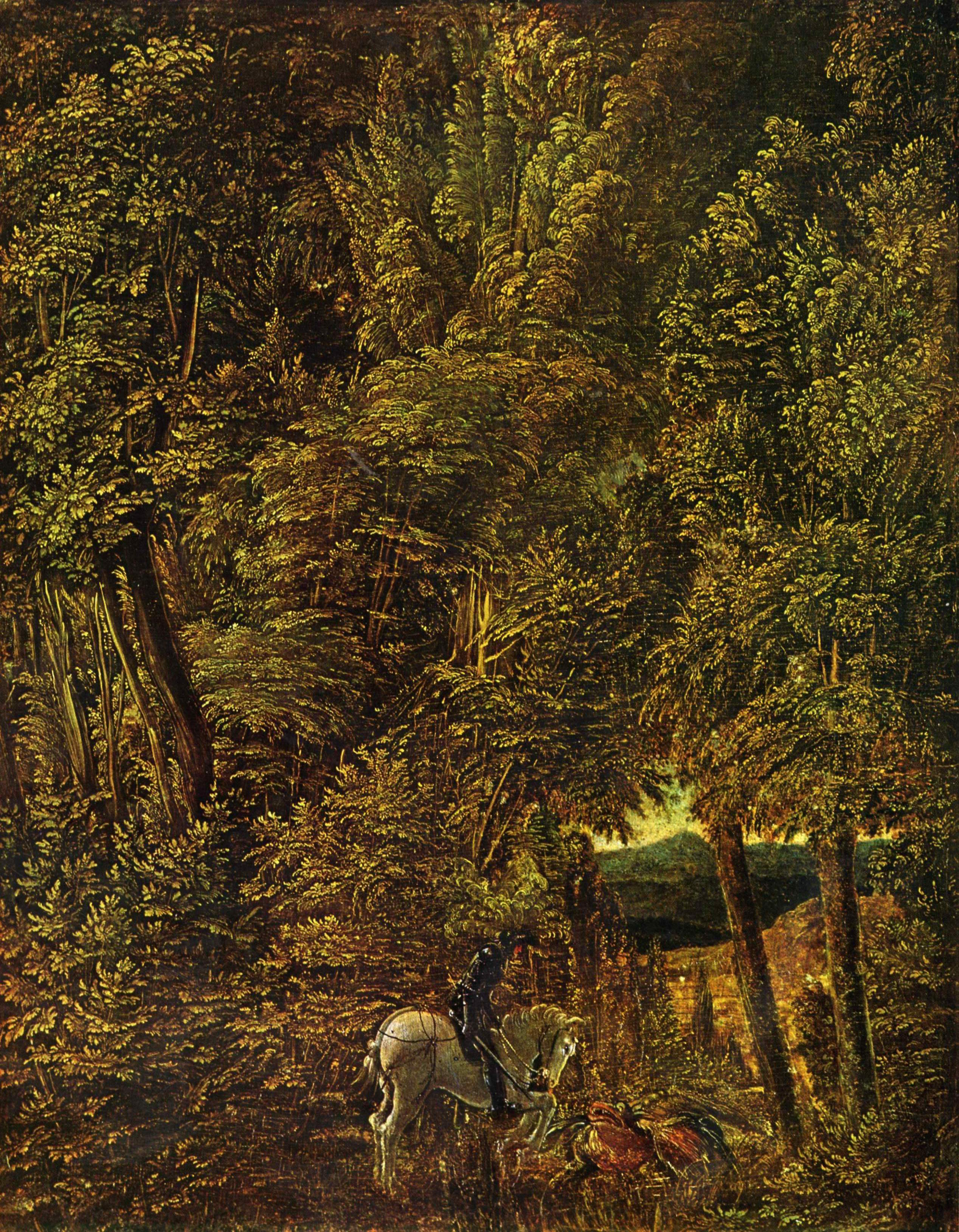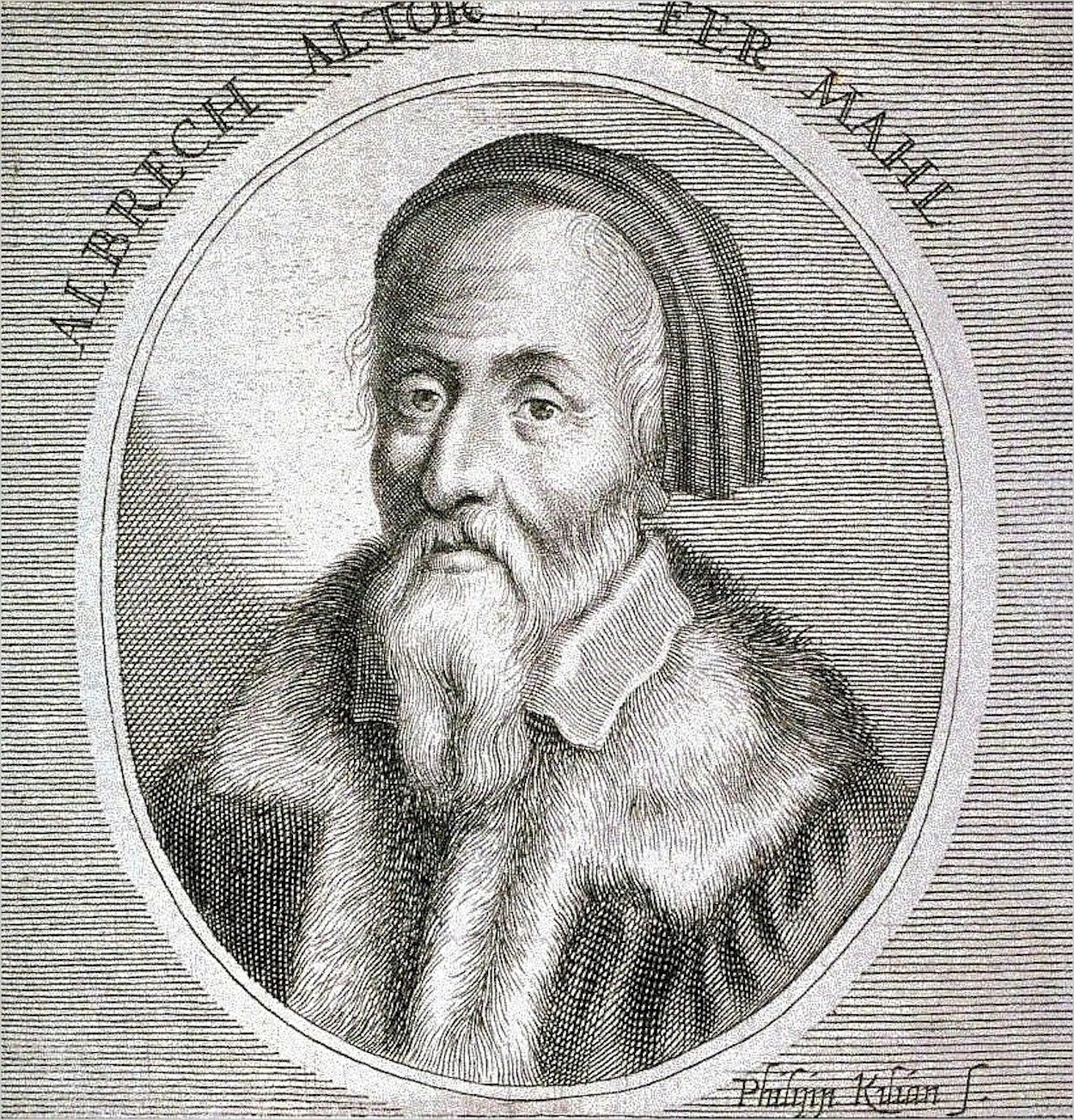This tiny panel (look at the size, 28.5 cm X 22.5 cm) is filled with the ferocious wildness of the forest, from which the lumpy, froglike dragon seems to emerge, slobbering with primordial slime. In a little opening where the trees open, the light of the outside world burns through. St. George is not in the act of killing the dragon—rather, he seems to be looking down on it with pity. His lance hangs limply at his side. Altdorfer's St. George looks tired, his armor is dingy, and the horse seems to shrink back in disgust at the sight of the formless, murky dragon. The figures become lost in the ferocious foliage (ferocious like the dragon traditionally should be) which threatens to choke out the figures themselves (who should traditionally be the focus), and they all seem to merge into monochrome. The knight seems to be internally pondering on the realization that he knows he must slay the dragon in order to leave the dark forest of the unconscious and emerge into the distant light of the ego-world. His armor glints dully, noting the fragile boundary of his blurry persona. The princess is nowhere to be seen, so what is the purpose of this "battle?" The theme of Saint George battling the dragon has a long history in art, where it has often been understood as a metaphor for the victory of the Christian spirit over the forces of evil. The forest in Altdorfer’s work not only sets the tone for this contest, but also seems to be an integral factor in it. Activated by the curving lines of leafy branches and dappled sunlight, the forest exudes anxious energy. A primeval testing ground for the saint, it is at once a sinister and dangerous world of monsters and an untainted source of purity and strength. Altdorfer, thus, approaches the idea that the forest itself might be a character worthy of representation and capable of expressing meaning in its own right. Within a decade of creating the Saint George, Altdorfer was producing, in paint and print, some of the first “true” landscapes in Northern Europe.
Thank you for bringing this Maciek!


 Albrecht Altdorfer
Albrecht Altdorfer